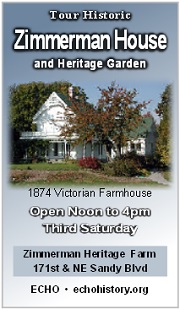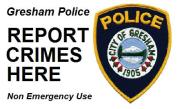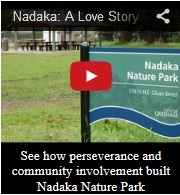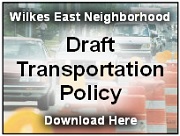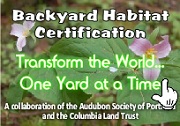
City of Gresham, Climate Action Meeting, “All Things Trees”
City of Gresham, Climate Action Meeting, “All Things Trees”
By Janet Unruh, Wilkes East neighbor
The third Climate Action meeting was held September 28, 2023 in the City Council chamber. 30-40 people attended in person.
Presenters
- Shannon Martin, Solid Waste and Sustainability Manager
- Johnny Dea, Climate Action Plan Project Manager
- Tina Núñez-Osterink, Natural Resources and Parks Planner
- Mary Phillips, Senior City Planner at City of Gresham, working on tree code
- Sarale Hickson, Urban Planner at City of Gresham, working on updating regulations related to waterways, floodplains, wetlands, and steeply sloped areas
- John Wasiutynski, Director of the Office of Sustainability, Multnomah County
- Dr. Vivek Shandas, renowned climate researcher and professor at Portland State University
Good news – Gresham is getting money for Urban Forestry
The USDA Forest Service’s Urban and Community Forestry Program awarded over $1 billion to fund urban forestry projects across the U.S. that “support equitable access to trees and the benefits they provide.” “Equitable access” refers to low-income neighborhoods that are deficient in tree canopy. The funding was made possible by the Inflation Reduction Act (IRA).
Locally, a coalition led by Friends of Trees, including the City of Gresham, and others applied for funding. The coalition received a $12 million grant to be used over next five years to work with neighborhoods to plant and care for trees.
The IRA urban forestry projects include:
- Community tree planting (training and engaging volunteers) to plant up to 2,300 street and yard trees and 21,000 native shrubs in neighborhoods and natural areas, specifically in identified equity areas: East Multnomah County, West Eugene, and Springfield
- Robust post-planting care, including watering, mulching, and natural area maintenance
- Opportunities for direct community input and participation
- Community education
- Workforce training
Tina will be meeting with coalition members to find out how much of the funding Gresham will receive.
Green Gresham, Healthy Gresham
Green Gresham, Healthy Gresham (GGHG) will help identify where to plant trees, taking into consideration the demographics behind the lack of trees. Tina and John Wasiutynski began GGHG about six years ago with the goal of planting more trees to make Gresham a lusher, greener place for all who live in Gresham. Thanks to grants they have received along the way, they have been able to plant over 500 trees, take an inventory of street trees, maintain tree canopy, and recruit homeowners to plant trees. The IRA grant is much larger than the earlier grants and it will provide much more funding for tree planting and care. And there’s more good news: in addition to the IRA grant, Tina, John, and GGHG expect to receive grant money from FEMA for post-disaster response due to the heat dome event in June 2021. In that event 69 people died in Multnomah County.
See also: Green Gresham, Healthy Gresham' Grant Project Adding Street Trees to West Gresham Neighborhoods, the Wilkes East Neighborhood Newsletter http://www.wilkeseastna.org/node/3542
How trees help with hotter, drier temperatures
Trees help cool the environment. They are a simple and effective way to reduce urban heat islands. Trees and other vegetation such as bushes, shrubs, and tall grasses provide shade and cooling through evaporation and transpiration. They absorb water through their roots and cool surroundings by releasing water vapor into the air through their leaves. Trees and vegetation are most useful as a mitigation strategy when planted in strategic locations around buildings and in parking lots and streets. https://www.epa.gov/heatislands/using-trees-and-vegetation-reduce-heat-islands
Note: Heat is the number one weather-related killer in the United States. https://www.weather.gov/oax/heatsafety
Where Gresham is hottest
Heat-related deaths are associated with tree-deficit areas. When trees have been cut down in a neighborhood, heat-related deaths rise (quoting Dr. Shandras).
Rockwood is the hottest census block in Gresham. Rockwood has a deficit of trees because of large parking lots and rooftops in the industrial areas and because of wide roads. The heat island in Rockwood centers around the former Sunrise Center and Kitchen (see map, below).
Heat islands are usually associated with industrial areas or big-box stores with their acres-wide roofs and enormous parking lots. But in the case of Rockwood, the heat island is next to residential areas where people walk to Max, catch a bus, go to a grocery store, or walk to their apartment. In the summer, this creates a health hazard for anyone transiting through, shopping, or living in this area.
Of course, excessive heat isn’t limited to Rockwood. Tina, John, and GGHG will determine where to plant trees in Gresham using the “Growing Shade” tree canopy map of Gresham created by CAPA Strategies (see map, below). The map includes environmental and demographic data to show where trees are most needed in Gresham. See: https://storymaps.arcgis.com/stories/1332900e0a674f72bfb5d0eaa318504f.
Dr. Shandra: why some neighborhoods have too few trees
Dr. Shandra is perhaps best known for collecting and analyzing data about actual street-level temperatures. See: https://www.opb.org/article/2021/08/12/psu-professor-suggests-ways-cities-could-adapt-to-hotter-temperatures/. He is the director of the Sustaining Urban Places Research Lab at Portland State University. He works with universities and cities around the world to collaborate with communities that need tree canopy. Other projects include observations of trees during heat waves, and tracking the movement of pests and diseases.
Dr. Shandra talked about the history of attitudes toward trees in cities – from aesthetic (trees are beautiful) to essential (we need trees to live). Around the 1930s, segregation was codified nationwide and redlining divided neighborhoods that were deemed worthless from the wealthier neighborhoods. Even though redlining is now illegal, the effects of these laws continue today. Lower-income neighborhoods still have fewer trees and lack diversity in the kinds of trees. The opposite is true of wealthy neighborhoods, which were planted 30, 50, or 70 years ago. And so it is with the Rockwood neighborhood, though happily, it is in the process of betterment thanks to a 20-year Urban Renewal Plan to improve Rockwood's economy and community.
Climate changes in Gresham by 2080
The climate of Sacramento, California is gradually moving toward us and could be here by 2080. This means that the trees we select to grow now must be able to survive Sacramento Valley conditions. In 2080 – 57 years from now – we will have about 65 days that are over 90 degrees – if we humans don’t find ways to mitigate climate change. Even the best case has 30 days above 90 degrees, an increase of 23 days. That’s pretty grim news.
The image below is from a presentation given in the meeting. Lincoln, California is 30 miles from Sacramento.
If this is the case, every year will be hotter and drier than the year before. Change is already here: some trees that have been native to the Portland metro area are no longer doing well, such as the Western Red Cedar and the Red Alder.
I searched the Internet for the kinds of trees that currently grow in Sacramento, especially shade trees. I found a website called Sacramento’s “Shady 80.” The organization behind it has planted over 1.5 million trees throughout the Sacramento region since 1982. See: https://sactree.org/best-trees-for-sacramento/
The website shows over 80 recommended shade trees for Sacramento. There are some that currently grow in Gresham, such as the Gingko, the Redbud, the Incense Cedar, Oregon Ash, the Ponderosa Pine, and others.
Perhaps a good choice would be California Sycamore. This tree (photo, below) is fast-growing and quite tall at maturity. It grows as much as three feet per year and reaches a height of about 70 feet. In theory, this would take 23 years.
Final thoughts
The meeting focused on tree-planting in low-income neighborhoods, which is badly needed. However, we need an objective target and measurable results. The city has the data on the greenhouse gases emitted in Gresham. What is the maximum portion of these gases that can be mitigated by trees? How many trees would it take? I haven’t seen this type of approach yet.
Of course, trees aren’t the only climate-related mitigation we need, but they can help a lot. A recent study published in the journal Science discussed the global potential of restoring forested lands as a possible strategy for mitigating climate change. The study is reported in Science: The global tree restoration potential, See: https://www.science.org/doi/10.1126/science.aax0848
The international research team used direct measurements of forest cover around the world to create a model for estimating forest restoration potential. Their conclusions on tree restoration generally agree with recommendations made by the Intergovernmental Panel on Climate Change in 2018. The IPCC hypothesized that by 2050, 2.3 billion acres of new forests could help limit the increase in global average temperature to 1.5 degrees Celsius (2.7 degrees Fahrenheit) above pre-industrial levels. 1.5 degrees Celsius is the limit that should not be exceeded to prevent the worsening and potentially irreversible effects of climate change. In 2022, the average global temperature was about 1.15 degrees Celsius above preindustrial levels See: https://news.mit.edu/2023/explained-climate-benchmark-rising-temperatures-0827
My conclusion: I feel confident that the City of Gresham is on track to do its part. I would just like to see some metrics.









